In car-centric Fort Worth, visual impairment impacts much more than what you see
Larry Pike’s day starts at 3:30 a.m. The pre-dawn wake-up gives him a few hours to freshen up and gather his things before hustling to clock in at his warehouse job in downtown Fort Worth by 7.
Most of his neighbors in Forest Hill would make the roughly 10-mile trip by car, normally a 15 minute affair (sometimes 20 when traffic flares).
Pike, who has lived all 56 years of his life in North Texas, hasn’t gotten behind the wheel in more than two decades. By a twist of genetic fate, he inherited retinitis pigmentosa, a degenerative disease that eats away the retina. He drove until his early 30s, when his failing eyes inescapably got the better of him.
“They say, ‘Well what do you miss the most?’ I tell them: driving. I miss driving. Because …” Pike trailed off and began to cry. “I lost a freedom.”

For the past 13 years, he’s relied on Access, Trinity Metro’s paratransit program, to recreate some semblance of independence. A van swings by his home between 5:35 a.m. and 6:15 a.m. most workdays. The driver completes any other scheduled pick-ups and dropoffs before shuttling Pike to Lighthouse, a nonprofit that offers support services, classes and low-paying factory jobs to people with visual disabilities.
Pike and his colleagues congregate on a gated, brick patio outside the work rooms at around 4:30 p.m. to await a fleet of yellow cabs for the return trip. A regular commute takes 45 minutes each way.
Pike is among the estimated 811,000 Texans with partial or total vision loss. Around 24,400 Fort Worth residents reported being blind or having “serious difficulty seeing, even when wearing glasses,” according to 2022 Census surveys. Dallas city officials estimate 150,000 visually impaired people live in North Texas.
In a region designed for cars, visual impairment can mean lacking much more than just sight. Going where you want, when you want, becomes a luxury. Simple trips can require days of planning; a 15-minute drive can take hours by other means. The services designed to restore some level of agency for Fort Worth residents with disabilities are vital yet insufficient, according to many of its regular users and advocates for the blind interviewed by the Star-Telegram.
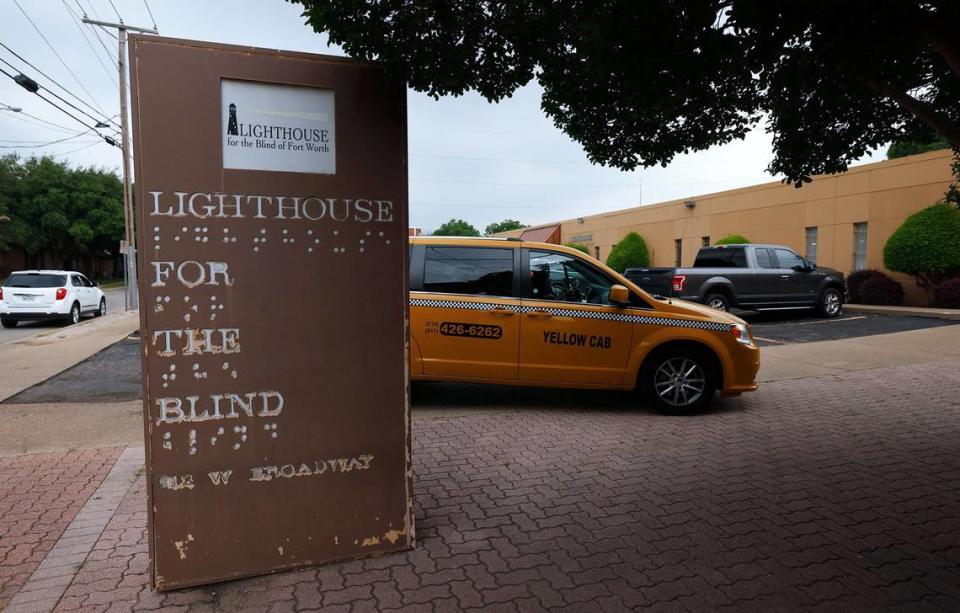
Freedom
Sheila, now 70, also stopped driving two decades ago because of her blindness. (She preferred to use only her first name to protect her privacy.)
Doctors diagnosed her with cataracts and glaucoma in her early 50s, when she worked as a medical office manager in Richmond, Virginia.
“I went to my eye doctor one Friday afternoon, and he did some laser surgery in the office,” Sheila remembered. “By Monday morning, I had almost no vision.”
All she was and all she planned for felt, for a time, like it was crumbling. A cascade of other illnesses forced her to stop working shortly after her eyesight failed. Ever social, she now had to think carefully about when and how she would leave the house. She spent a few years reorienting herself on her own, hitching rides with friends and learning bus routes to piece together some level of autonomy and direction. But before long, she moved to Fort Worth to live with her daughter and son-in-law.
“That loss of independence was very difficult,” she said. “It was disconcerting for a very long time.”
Regaining that freedom, or approaching it, has no universal prescription. Comforts and capabilities (physical and financial) vary. For some, buses and trains present the least worst alternative.
Billy Patton, 53, works with Pike at Lighthouse. Like Pike, Patton is the kind and portly middle-aged father of a 20-something. The genetic lottery damaged the nerve endings in his eyes; his view of the world, muddled since birth, has steadily deteriorated. He now navigates life on the cusp of legal blindness, with no depth perception.
“My picture’s kind of shrunk compared to everybody else’s,” he chuckled.
Tall and not totally sightless, Patton feels comfortable navigating Trinity Metro’s train and bus routes without a cane or a guide dog. His daughter, a 21-year-old graphic design student who inherited his condition, is slowly but surely getting comfortable with the system too, he says.
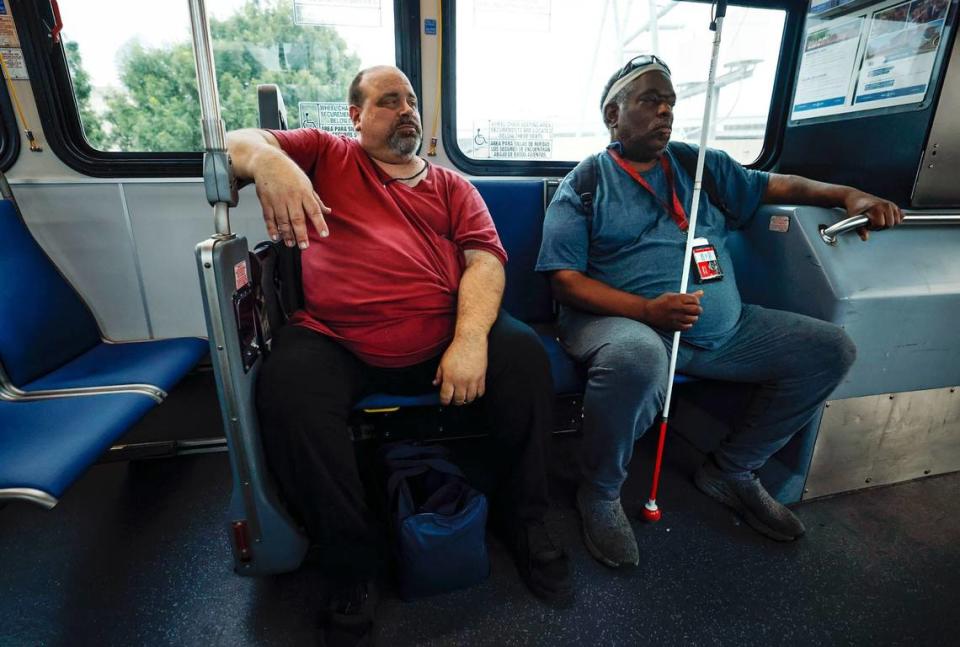
A straightforward two-way commute from his home in North Richland Hills for his full-sighted peers is, for Patton, a multi-leg marathon. He wakes up at 4:30 a.m. and walks or takes an Uber to a nearby TEXRail stop, hoping to catch the 5:30a.m. train. He rides until T&P Station, where he transfers to a bus that drives him to a street corner right by his work, about a mile south. He repeats the same trip in reverse when his shift ends at 4:30. At its smoothest, the whole adventure usually takes around two hours.
His wife took up the role of designated driver until she died in 2016; he and his daughter venture out less now. He can legally drive if he wears a small, powerful telescopic lens fastened to a pair of glasses, but taking the wheel frightens him.
“I just don’t want to take the chance of hurting somebody,” Patton said.
Rideshare apps have simplified things. He can book trips and make out the details of his rides by holding the phone screen close to his face or breaking out a small, foldable magnifying glass that he carries religiously in his pocket. (“It is my life,” he said.)
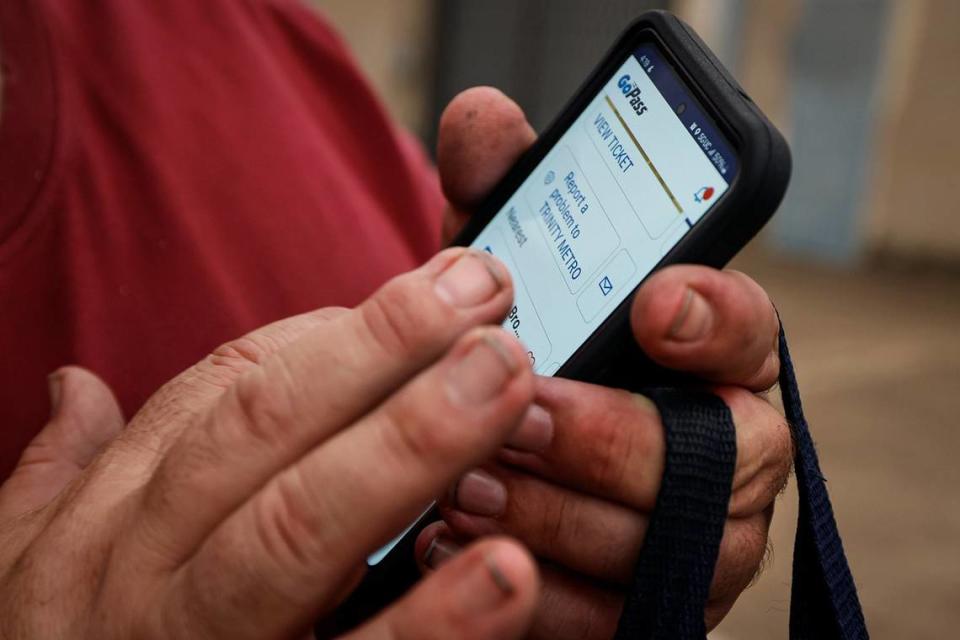
Accessibility of transit system
Fort Worth’s existing train and bus system does little to improve Pike or Sheila’s mobility. Audio cues in buses don’t always sound. The closest stop to Pike’s home is a two-mile trek across busy roads, along streets with damaged (or non-existent) sidewalks. Sheila, who uses a walker after multiple back surgeries and is almost totally blind, lives in a far-flung subdivision.
Riding along with loved ones isn’t always possible (or desirable) either. Sheila usually accompanies her daughter and son-in-law on evening grocery runs or weekend excursions, but they both work full-time, in-person jobs. Pike will sometimes, with deep reluctance, request a ride with his daughter or sister, but only if he’s desperate.
“Every now and then my daughter will take me, but I don’t like to do that, because that takes away from my independence,” he explained.
Many visually impaired people find Uber and Lyft too pricey for daily use. Close to 30% of Americans with visual disabilities live below the poverty line. Pike and Patton make $10 to $11 an hour; their monthly Social Security check doesn’t juice up their income by much more. (Sheila, for her part, doesn’t get along with her iPhone. “I would happily throw it through the window,” she said.)
What’s left is Access. The Fort Worth city government piloted the program’s predecessor, the Mobility Impaired Transportation Service, in 1979. Trinity Metro (then the Fort Worth Transportation Authority) took over the system’s operation four years later.
Access functions as a remedial rideshare service for people with disabilities. In recent years, it has provided around 25,000 rides a month.
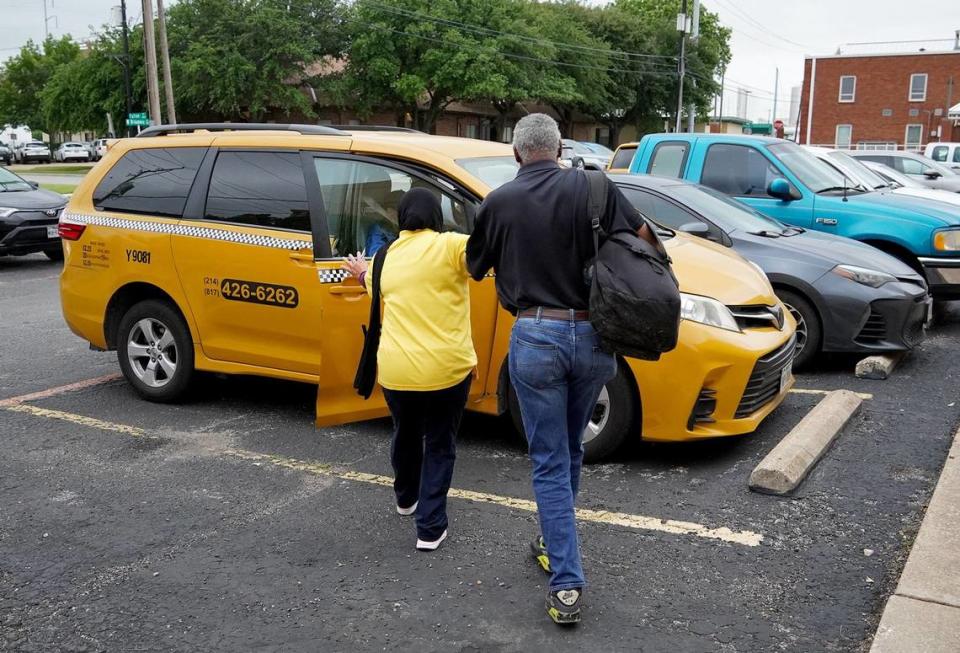
In theory, a qualified rider phones a dispatch to schedule a trip, as early as seven days before the voyage or as late as 5 p.m. the night before. A minivan or bus then picks up the rider at a location of their choice at the agreed upon time and busses them to their destination, often making pit-stops to drop off other passengers. Each ride is $4.
A driver can arrive 15 minutes before or after the scheduled pick-up, but they need only wait five minutes for the rider to show before moving on. Drivers are meant to phone the passenger and, if needed, walk up to a building to fetch them once they arrive. As a rule, Access drivers have a hard maximum of 90 minutes to drop somebody off.
Access regulars expressed deep gratitude but little enthusiasm for the service when discussing their experiences with the Star-Telegram.
“I am very thankful that the service exists because I would really be up a creek if it didn’t,” said Sheila, who uses the program at least four to six times a month to get to and from appointments. “Sometimes it gets tiring, but I’m just so thankful that it exists at all.”
But Access’ ability to empower its users is, many say, limited by its shortcomings. Vans routinely arrive well before or well after the 30-minute pick-up window.
Sometimes drivers don’t announce their arrival, and there’s no app to follow their status. Rebooking a botched pick-up the same day can take hours, if it’s possible at all.
Several frequent passengers described being bossed around and mishandled by rude or disinterested drivers. (Many drivers, interviewees stressed, were prompt, friendly and supportive.)
“I had my cane and I was stepping down off my porch,” Sheila remembered of one incident with a driver, “and he picked up the end of the bottom end of my cane and was trying to lead me like a dog.”
The existing Access system can be convoluted and frustrating even when it operates fully within its stated parameters.
Many regular riders bristled at the fact that they might have to wait up to 30 minutes for their driver to arrive, but their grace period is only five. Several users recounted passing their destination three or four times on a given trip as drivers off-loaded other passengers.
Because a commuter can never be sure if they’ll be in a van for 15 minutes or 90, they tend to book pick-ups well in advance of their appointments. The same worst-case logic applies in reverse: events and appointments may not have definite or predictable end times, so experienced passengers often overshoot their return trips instead of risking a missed ride.
“I always overestimate because I’d rather sit in the doctor’s office or a building lobby than not be ready when your ride comes,” Sheila explained. “Generally, if you have an appointment in the middle of the day, it takes up most of your day.”
Trinity Metro’s changing Access fleet
Sheila and others suspect Access’ faults are a product of understaffing and poor training.
A Trinity Metro spokesperson said the service has 45 full-time drivers to man its fleet of roughly 45 contracted Yellow Cab minivans and a few dozen in-house vehicles. Driving shifts are meant to last eight hours, but that limit is sometimes broken; an Access driver picking up Lighthouse workers in early May at around 4:30 p.m. said she’d been on the clock since 5 that morning.
Each driver, the spokesperson added, receives 120 hours of training, though they didn’t specify what exactly that training entails. Rider complaints can prompt extra coaching.
“Each complaint is individually addressed and any necessary training is scheduled to correct the behavior,” the spokesperson wrote.
Amanda Guerrero, a mobility specialist at Lighthouse, says the nonprofit hosted a “really good” Blind Awareness Training with Trinity Metro officials and Access supervisors last August.
“We’ve offered a few times to put together a training for the drivers of Trinity Metro, Access, and the cabs that are used by Access as part of their hiring process,” Guerrero wrote in a message to the Star-Telegram, “but haven’t been taken up on that yet.”
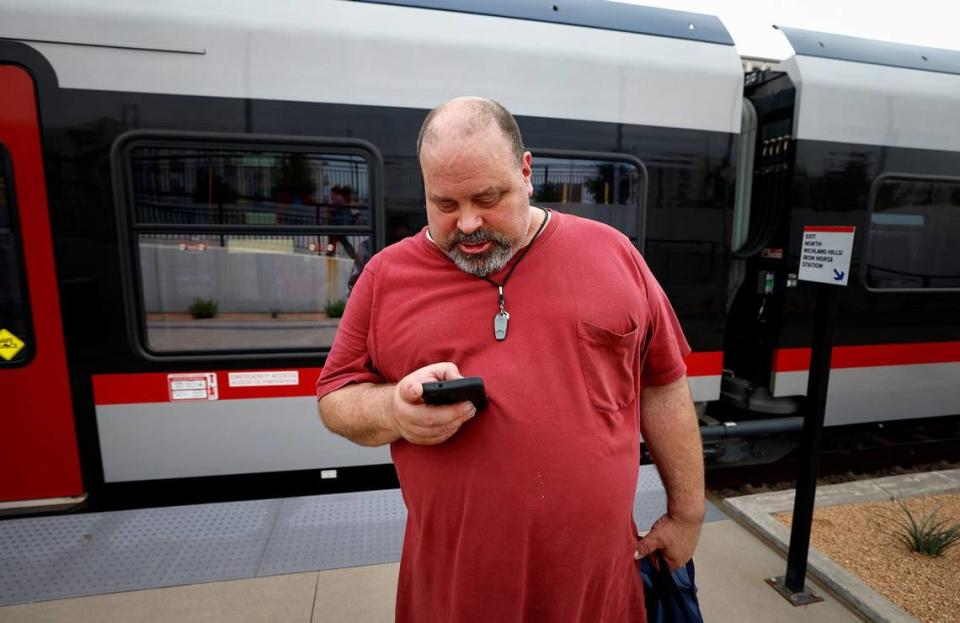
Though Trinity Metro has no plans to expand the size of its Access fleet, it has other reforms in store. It intends to shift the entire service onto a digital platform run by Via, a transportation software company, by next October; Via currently operates Trinity Metro’s general-use rideshare service Zipzone. The transition, officials hope, will make rides easier to book and quicker to arrive.
Guerrero thinks true equity for Fort Worth’s population with disabilities requires floor-to-ceiling improvements in every aspect of transit: more and better sidewalks, more frequent and accessible buses, and so on.
But steady progress — any progress — is welcome news to Pike and his peers.
“Everybody that loses eyesight will tell you it’s depressing,” he said. “But there’s a point you have to say ‘I can’t let this get me down,’ and you get up and start going again. I guess your survival mode kicks in.”


